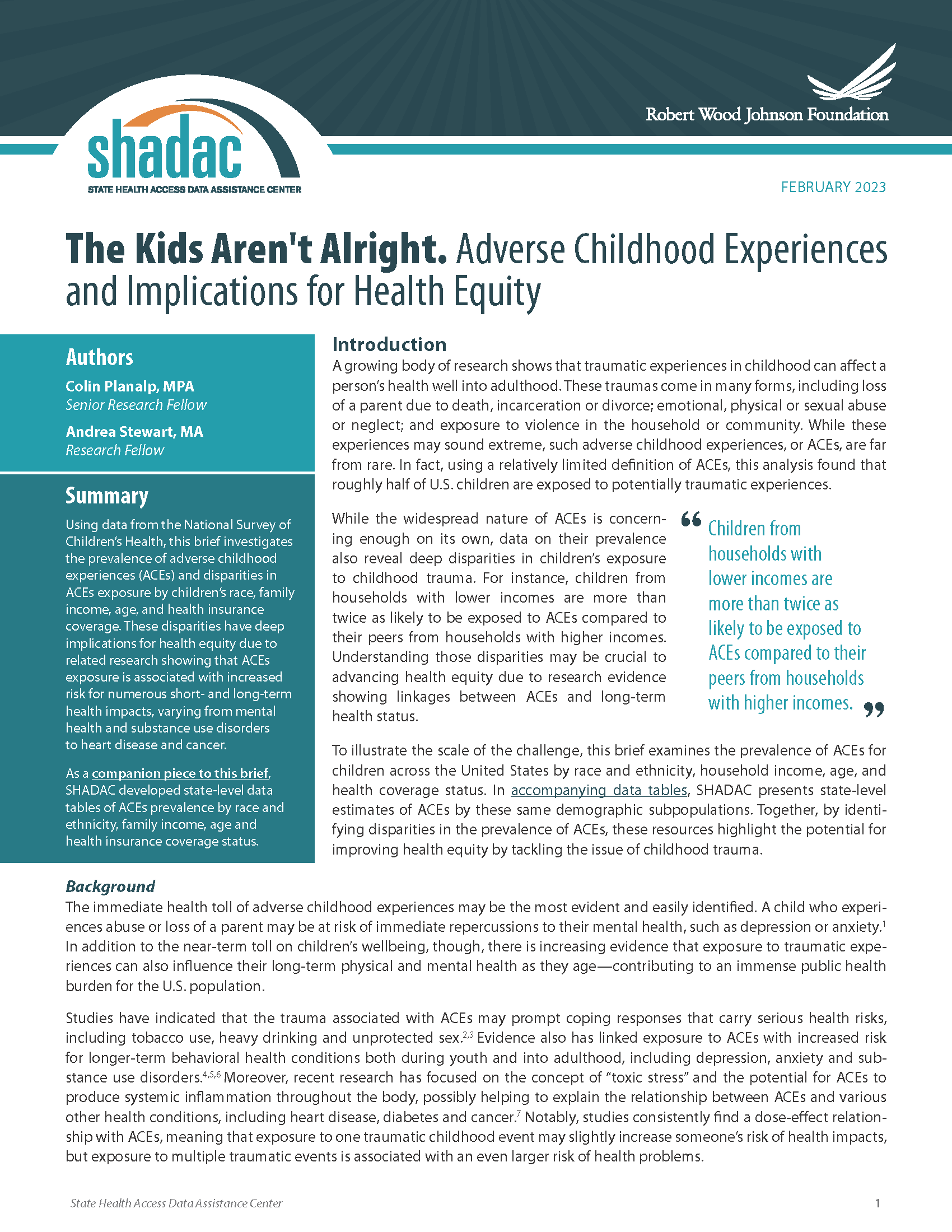Percent of children with adverse childhood experiences (ACEs)
Measure Overview
Generate customized graphics using this data by selecting one of the options below.
Related Product

What Are Adverse Childhood Experiences (ACEs)? ACEs Definition, Data Challenges, and Resources
Children’s health is impacted by a number of factors – family life and income, housing, neighborhood, nutrition, health care access and cost, amongst others. Adverse Childhood Experiences (ACEs) is a broad term for a range of negative experiences people may experience as children that can have profound implications for their health. Learn more in this blog.

The Kids Aren't Alright: Adverse Childhood Experiences and Implications for Health Equity
This brief investigates the prevalence of adverse childhood experiences (ACEs) and disparities in ACEs exposure by children’s race, family income, age and health insurance coverage. These disparities have deep implications for health equity due to related research showing that ACEs exposure is associated with increased risk for numerous short- and long-term health impacts, varying from mental health and substance use disorders to heart disease and cancer.
